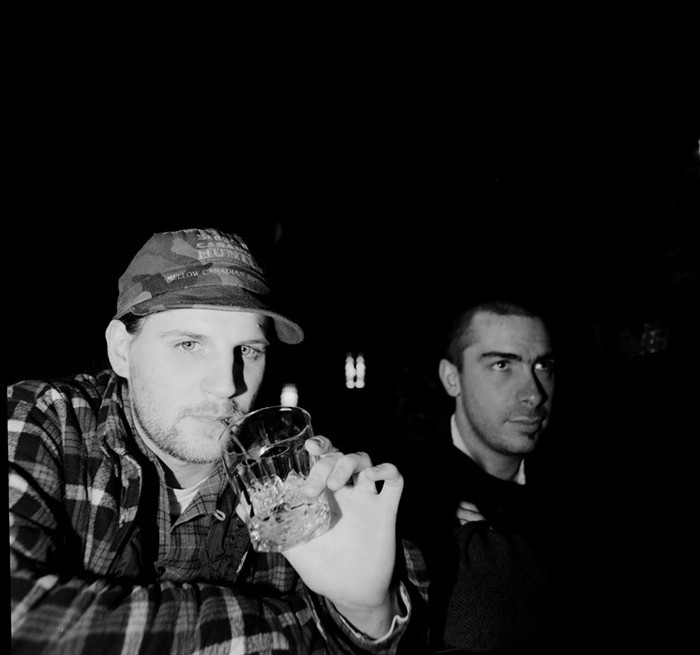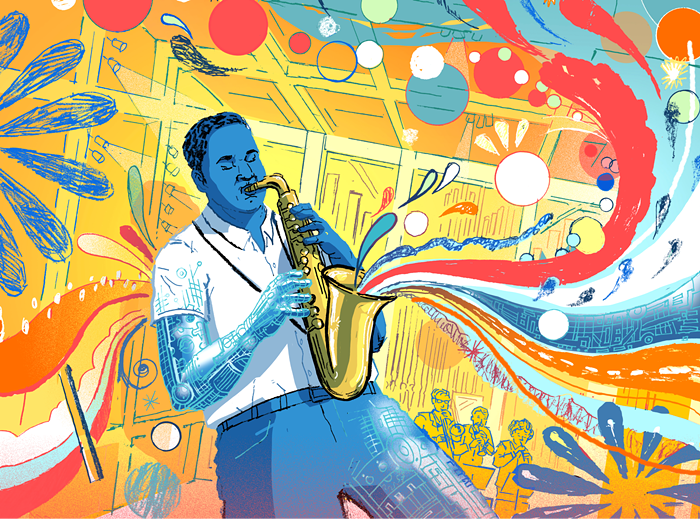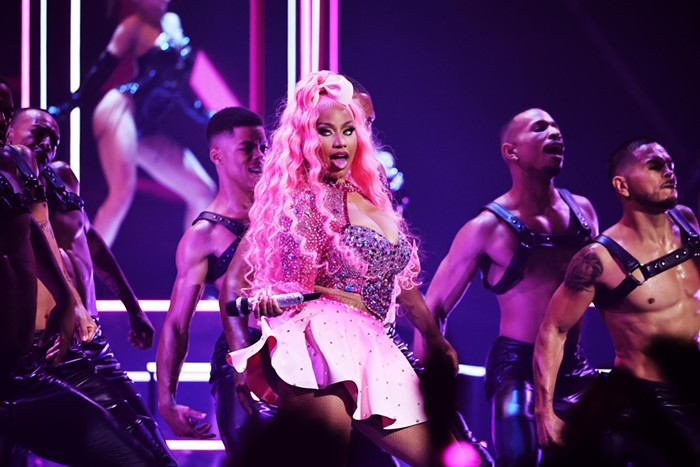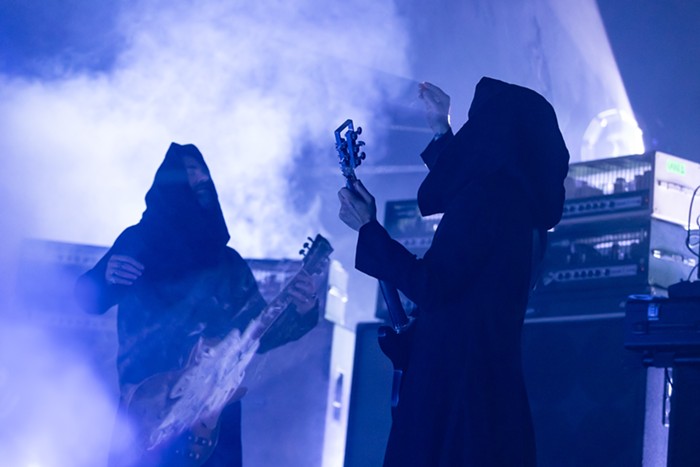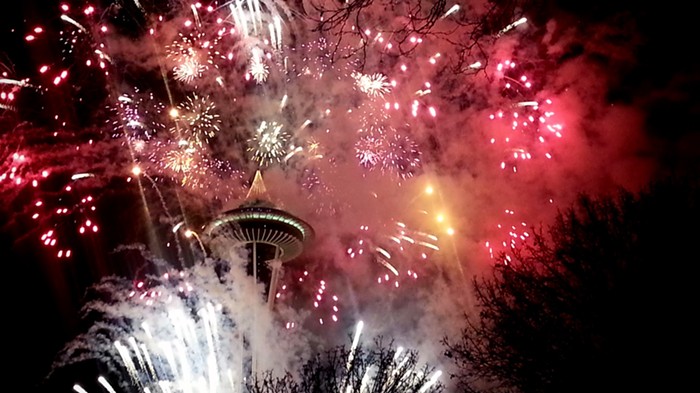"Y'all ready to see Death Cab for Cutie!?!? Wussup?! I said are y'all ready for Death Cab for Cutie?!?" He sounded like he was introducing a rap crew called "Def Cab." The indie rock crowd were somewhere between amused and stunned, and mostly just shifted their weight.
"Check it: The energy y'all give them, they're gonna give back to you, nahmean? So I want everybody to say 'Def Cab for Cutie' with me! Come on! DEF! CAB! FOR CUTIE! WHAT? DEF! CAB! FOR CUTIE! SAY IT! DEF! CAB! FOR CUTIE!"
I didn't realize just how far apart the worlds of rap and rock shows were until that moment, when the crowd tepidly responded to this misplaced hype man. I think a few people who did shout back were sincere, but others who yelled seemed to mock the idea that one would shout like this for a band such as Death Cab for Cutie. And of course, how could the guy think he'd be able to whip up the crowd like it was a rap show? These people didn't come to shout. And the bit about the "energy you give them"? It was like a foreign language.
In my own state of feeling like everything was out of place, I realized that the experiential difference between rap and rock crowds is drawn along the lines of the social and psychological pursuit of placement, of location, of that William James notion of "being at home in the world." Americans are not at home in America, this country of land-stealers and displaced immigrants. The psychology of the individual American is built on a basic need to feel comfortable in his or her own self-determined space. Forms of American art, especially rock and rap music, provide ways to understand this plight.
The qualities of rock shows bring to light this perpetual dislocation. Unless it's a sold-out show, the audience members commonly stand with plenty of room between one another. The performer usually speaks very little to the audience members and stands back from them. The "Thank you" that is sometimes uttered into the microphone often seems dismissive, or at least too humbled and curt to provide any substantive connection between the artist and crowd.
Everything exists in an internal space at a rock show. I always feel that rockers expose something very private to the audience, even if the exposition is high-energy and spectacular. Because the creative product is private, it is not located in public space. When it is exposed to many people, it is still a product of a private imagination, and the audience respects that by remaining self-enclosed as well. If the crowd is particularly energized by the music, a mosh pit forms where the dislocation is brought to a confrontational chaos, but even this is rare nowadays.
Where rock shows quietly bring to light the sense of dislocation, rap shows get you to recognize where you are ad absurdum. "What's up, Seattle?!" is often how rap shows begin, as if you might have forgotten what city you're in. One of my favorite crowd-involving devices is getting one side of the audience to mockingly say something like, "Fuck that side!" to the other, and vice versa. At rock shows I hardly know I'm a part of an audience, whereas rappers will go so far as to point out where I'm actually standing in it.
When Grandmaster Flash and the Furious Five would play a show, they would spend much of it, as true "master of ceremonies" MCs, getting those in the crowd to yell their birthdays and astrological signs while waving their hands in unison from side to side. What is the point of all this? Why would you want every member of the crowd to yell something different at the same time? If you force them to identify their body parts, remember their birthdays, and become aware of their surroundings, their dislocation is, at least temporarily, assuaged.
The American condition of dislocation is perennial. Some forms of art respond to this differently than others, but perhaps each dosage of live American music can move you closer to a solution of how to deal with it.
